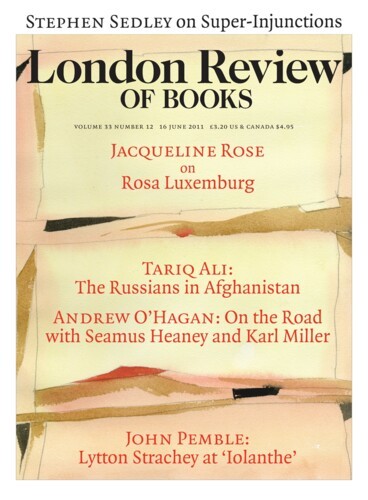The events identified with Tahrir Square have resonated in sub-Saharan Africa, and suggested a new way of doing politics: politics without recourse to arms. This has bewildered officialdom and sometimes sent a chill running down its spine. Uganda is a good example: Tahrir Square has enabled us to understand a new form of protest we call ‘walk to work’. The immediate background to the walk to work campaign was the government’s refusal to allow any form of peaceful assembly in protest at any aspect of its policies. Recently, the Pan African Movement, set up under the auspices of President Museveni of Uganda and Colonel Gaddafi a couple of decades ago, has been the only organisation to receive a permit: it wanted to march in solidarity with Gaddafi and the Libyan people in opposition to the Nato bombardment. The march was to end with a rally, addressed by a senior Ugandan military figure, but the government changed its mind, as the crowds were mustering. It seems to have realised at the last minute that the event could be hijacked by opposition supporters, or for that matter anyone disgruntled with government policy, and so decided to tear gas its own demonstration.
Soon after that, the opposition announced that it would resort to a new form of protest: its members would walk to work in response to rising fuel and commodity prices. Walking to work, the opposition said, was not an assembly and so required no police permit. The result was an extraordinary piece of theatre as police arrested opposition politicians walking to work and then looked for reasons to justify the arrests. Let me give you a few instances, from press accounts, of the events that followed. Salaamu Musumba, a prominent opposition figure, was walking with one other person, when he was stopped by a policeman. ‘Have you no car?’ the policeman asked. ‘Yes, I have,’ Musumba answered. ‘Then why are you walking?’ Musumba was arrested.
Asked what was wrong with people walking, the information minister suggested that the opposition must have a ‘hidden agenda’: it should ‘come up with proposals on how to handle the challenges … instead of going to the streets.’ The minister of internal affairs believed the problem was more sinister still. The motive behind the walk to work campaign was really ‘political’, otherwise the organisers would have followed official guidelines, which they had failed to do. ‘The police were not notified, the organisers did not identify themselves, the routes were not agreed upon,’ the minister said. Asked why the police had sprayed schools and health centres with tear gas, he said the fault lay with those who were walking: some of them, ‘when engaged by the police, decided to run into schools and health centres to use children and patients as human shields.’
The police force’s chief political commissar insisted that walking to work was bound to turn into a procession, and that the campaign organisers were therefore obliged by law to notify the authorities. ‘I have no quarrel with anybody who wants to walk but it must be in accordance with the law, by notifying the police and agreeing on the routes and maintenance of order.’ In short, citizens must obtain a permit specifying when and where they intend to walk. Struck by the absurdity of his position, he added hastily: ‘Many people walk, but this has turned into a political matter.’
The inspector general of police, a senior military man, did his best to alert Ugandans to the distinction between ordinary walking and political walking. Take the leading opposition figure, Kizza Besigye of the Forum for Democratic Change, arrested four times and shot in the hand during the walk to work campaign. ‘Besigye can walk,’ the inspector general announced. ‘There is no problem and he does not have to notify the police. However, when he wants to use walking or running as a demonstration, then he has to notify us.’ Pressed to explain what was wrong with political walking, the inspector general said the opposition’s intention was to create a Ugandan version of Egypt’s Tahrir Square.
In the early stages of the Egyptian uprising, the media dismissed the possibility of something similar happening in East Africa. In the media’s view, societies in countries such as Kenya and Uganda were too ethnically divided to rise up as one. But events have shown that unity does not precede political mobilisations of this kind; it is produced by them. This is why the memory of Tahrir Square feeds opposition hopes and fuels government fears in many African polities. A spectre is haunting Africa and its rulers – the spectre of Tahrir Square.
Send Letters To:
The Editor
London Review of Books,
28 Little Russell Street
London, WC1A 2HN
letters@lrb.co.uk
Please include name, address, and a telephone number.

